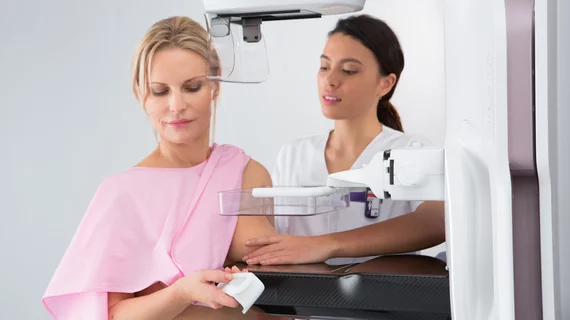Behavioral “nudges,” such as text messaging women ahead of their appointment, can help increase adherence to regular mammography screening, according to new research published Monday in JAMA Internal Medicine [1].
To reach this conclusion, scientists conducted two randomized clinical trials encompassing nearly 25,000 patients. Along with text messaging, they also tested other interventions such as ordering mammograms in bulk and having primary care docs endorse the request.
The practice changes appear to be paying off, with higher adherence rates for those who received nudges when compared to the control group.
“Population health approaches that involve direct outreach to patients have been shown to boost screening rates but are not widely used,” gastroenterologist and lead author Shivan Mehta, MD, MBA, associate chief innovation officer at Penn Medicine, and colleagues concluded. “New insights from the field of behavioral economics have shown that humans have systematic biases, which can be leveraged to improve adherence. For example, opt-out framing can overcome status quo bias by making preventive health the default option for patients. Bulk ordering of screening tests can reduce effort by both the clinician to individually sign the order and patients to obtain an order. Social norms suggest that patients may have higher response when the outreach is signed by their primary care clinician.”
Penn experts conducted the trials between 2021 and 2022 in two primary care regions of the academic health system. They included women 40 to 74 who were eligible for screening and attended at least one primary care visit during the past two years.
Patients in Trial A were randomized to receive a signed bulk order for a mammogram—with a designated practice physician making the request based on region or department. This is aimed at reducing the clinician’s need to individually sign orders and patients’ burden obtaining such a request. Those in the control group, meanwhile, received either a patient portal message or a mailed letter indicating they were overdue for a mammogram. Patients in Trial B were randomized to receive a message endorsed by their primary care clinician, instead of the typical communication from the larger overall organization. Individuals in both trials also randomly received text message reminders about the examination.
At three months, 15.4% of patients in the bulk order group completed a mammogram versus 12.7% in the alternative group (a “significant” increase, with an absolute difference of 2.7%). In the text messaging comparison arm, 15.1% of patients receiving such communications completed a mammogram compared to 13% who did not (also a significant increase, at 2.1%). In Trial B at three months, 12.5% of those who received a letter with a doc endorsement underwent breast imaging versus 11.4% in the control group (not significant, at 1.1%). In the text messaging comparison arm, 13.2% who received a prompt completed their exam compared with 10.7% in the no-text arm (a significant increase, at 2.5%).
Mehta et al. also conducted a financial analysis on these interventions. Cost per patient screened was $5.90 for basic outreach, $7.69 for basic outreach with texting, $4.07 for basic with bulk ordering, and $6.23 for basic outreach with texting and bulk ordering.
“The findings of these two concurrent, pragmatic, randomized clinical trials show that large-scale campaigns can be enhanced using new insights from behavioral science and information technology,” the authors noted. “Future studies are needed to show how screening rates can be increased further and for repeated screening programs.”
Read much more, including potential study limitations, at the link below.

